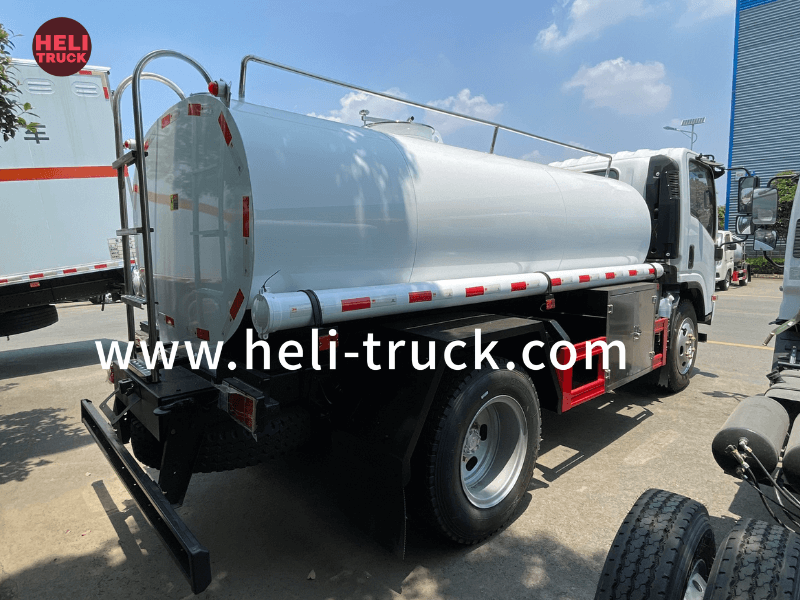Introduction
In the world of emergency response, fire truck hazmat response plays a crucial role in handling hazardous materials incidents. These incidents can range from chemical spills on highways to industrial accidents involving toxic substances. Firefighters and hazmat teams must be well-prepared and equipped to effectively respond to such emergencies to protect lives, property, and the environment. This comprehensive guide will delve into the various aspects of fire truck hazmat response, including training, equipment, procedures, and best practices.

Hazmat Training for Firefighters
One of the key components of an effective fire truck hazmat response is proper training for firefighters. Hazmat incidents can be complex and dangerous, requiring specialized knowledge and skills to mitigate the risks involved. Firefighters need to undergo comprehensive training programs that cover various aspects of hazardous materials, including identification, classification, behavior, and response techniques.
Training should include classroom instruction as well as hands-on exercises to simulate real-life scenarios. Firefighters must be familiar with the different types of hazardous materials, their properties, and potential hazards. They should also learn how to use specialized equipment such as gas detectors, protective clothing, and containment tools.
In addition to initial training, regular refresher courses and drills are essential to ensure that firefighters maintain their skills and stay up-to-date with the latest protocols and technologies. Training should be tailored to the specific needs of each fire department and its response capabilities.
Hazmat Equipment on Fire Trucks
Fire trucks that are designated for hazmat response are equipped with specialized tools and equipment to handle hazardous materials incidents safely and effectively. These trucks are typically equipped with a variety of equipment, including:
1. Personal Protective Equipment (PPE): Firefighters responding to hazmat incidents must wear appropriate PPE to protect themselves from exposure to hazardous substances. This may include chemical-resistant suits, gloves, boots, and respiratory protection.
2. Gas Detectors: Gas detectors are essential for monitoring the air quality at the scene of a hazmat incident. They can detect the presence of toxic gases and help firefighters determine the appropriate response measures.
3. Decontamination Equipment: Fire trucks carrying hazmat response equipment are equipped with decontamination tools to clean up personnel and equipment exposed to hazardous materials. Decontamination showers, wash stations, and cleaning agents are commonly used for this purpose.
4. Spill Control and Containment Tools: Fire trucks are equipped with spill control and containment tools such as absorbent materials, booms, and barriers to contain and control spills of hazardous materials. These tools help prevent the spread of contaminants and minimize environmental damage.
Hazmat Procedures and Protocols
Effective hazmat response requires well-defined procedures and protocols to ensure a coordinated and efficient response. Fire departments should have established protocols for hazmat incidents, including notification procedures, incident command structure, evacuation plans, and decontamination procedures.
Upon receiving a hazmat call, firefighters must assess the situation and determine the nature and extent of the hazard. This initial assessment is crucial for developing an appropriate response strategy and ensuring the safety of responders and the public.
Establishing a clear incident command structure is essential for managing hazmat incidents effectively. A designated incident commander should be responsible for overseeing the response efforts, coordinating resources, and making critical decisions to mitigate the hazard.
Evacuation plans should be in place to safely evacuate residents and bystanders from the affected area. Refuse Compactor Truck must work closely with law enforcement and other agencies to ensure a timely and orderly evacuation process.
Decontamination procedures are critical for protecting responders and the public from exposure to hazardous materials. Contaminated individuals and equipment should be promptly decontaminated using the appropriate methods and equipment to prevent further spread of contaminants.
Best Practices for Hazmat Response
To enhance the safety and efficiency of fire truck hazmat response, fire departments should follow best practices and recommendations from industry experts. Some of the best practices for hazmat response include:
1. Preplanning and Risk Assessment: Conducting pre-incident planning and risk assessments for potential hazmat scenarios can help fire departments identify risks, develop response strategies, and allocate resources effectively.
2. Interagency Coordination: Hazmat incidents often require collaboration with other agencies, such as law enforcement, hazardous materials teams, and environmental agencies. Establishing strong partnerships and communication channels with these agencies is vital for a coordinated response.
3. Continuous Training and Drills: Regular training and drills are essential for maintaining readiness and ensuring that firefighters are well-prepared to respond to hazmat incidents. Training should cover a wide range of scenarios and address the specific needs of each fire department.
4. Use of Technology: Fire departments can leverage technology to enhance hazmat response capabilities. Tools such as hazmat software, mobile apps, and remote monitoring systems can help firefighters access critical information, track resources, and communicate effectively during incidents.
Conclusion
Fire truck hazmat response plays a crucial role in protecting public health, safety, and the environment during hazardous materials incidents. By investing in training, equipment, procedures, and best practices, fire departments can enhance their capabilities to respond effectively to hazmat emergencies. Collaboration with other agencies, continuous training, and the use of technology are key elements in improving the safety and efficiency of hazmat response efforts. With a well-prepared and equipped hazmat team, fire departments can mitigate the risks associated with hazardous materials incidents and safeguard their communities.
